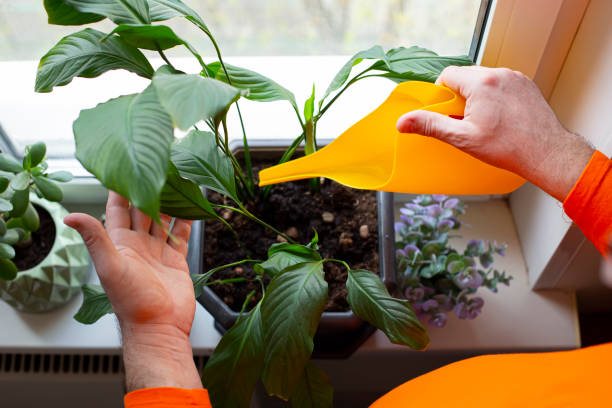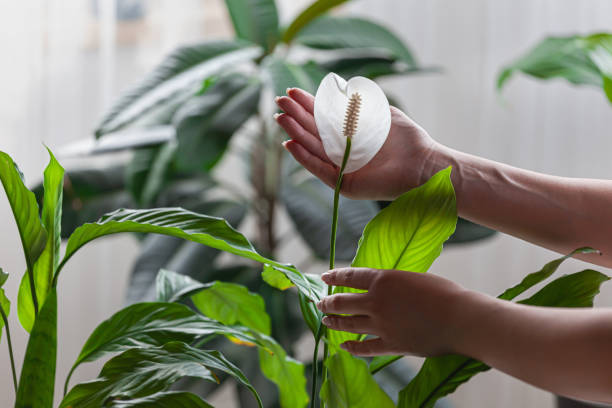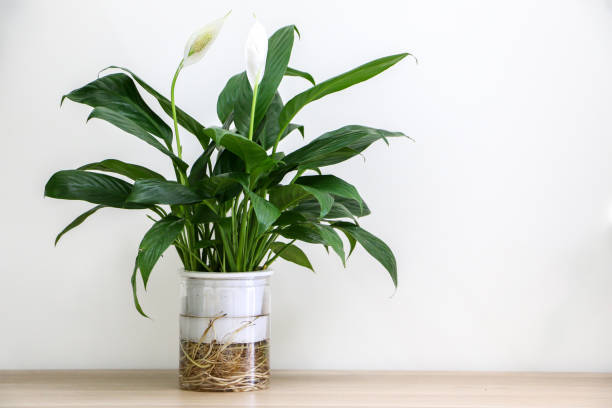What’s not to love about the peace lily, this easy-to-grow indoor plant will bring life and colour to your low-light spots while also purifying the air in your house.
Although they grow in poor light, they flower better in bright, indirect light and will struggle to produce blooms in deep shade. When growing these flowers, do expect flowering in early spring, with each flower lasting up to four weeks.
How to Grow a Peace Lily
Through trial and error, growing peace lily flowers is all about patience and learning the needs of your plant. Since they grow well enough in low-light spaces, they also tolerate fluorescent lights. When introducing peace lily houseplants be mindful of the light conditions as you want your plant to do well and produce well.
These flowers like a consistent temperature, not too hot or cold but just cool. Because they are used to a tropical environment a humid room, like your bathroom or kitchen, is ideal. Another way to keep your flowers humid is by spraying the leaves weekly especially in the summer growing months to help raise the plant’s humidity.

Image Credit: Unsplash
When growing indoors, your soil needs to be rich with a good potting mix that contains plenty of organic matter. Since peace lilies are native to tropical climates, you’ll need the best success with soil that mimics these conditions. Your pot has to be well-draining because the flower does not tolerate soil that is too damp.
When watering peace lilies, it’s better to under-water than to over-water. Use bottom watering methods, as watering from the top can lead to black spots on the leaves and other plant diseases. Keep an eye on the leaves; when they start to sag, it’s time to water. Generally, once a week of watering, along with occasional leaf spritzing, will be sufficient.
Common problems
With the right growing conditions, peace lilies usually thrive. However, problems can occur if the environment is not ideal.
- Browning Tips
- Curling Leaves
- Yellowing Leaves
- Black spots

Image Credit: Unsplash
ALSO SEE:
Feature Image: Pexels

